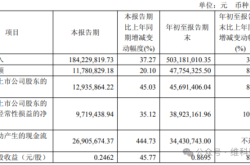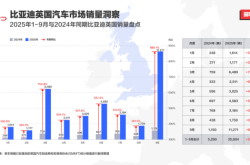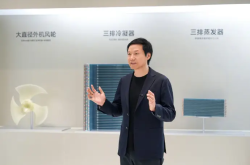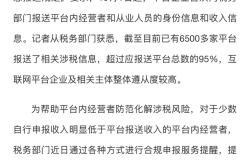Navigating the Integration of DeepSeek: Strategies and Mindsets of Tech Giants
![]() 03/24 2025
03/24 2025
![]() 528
528
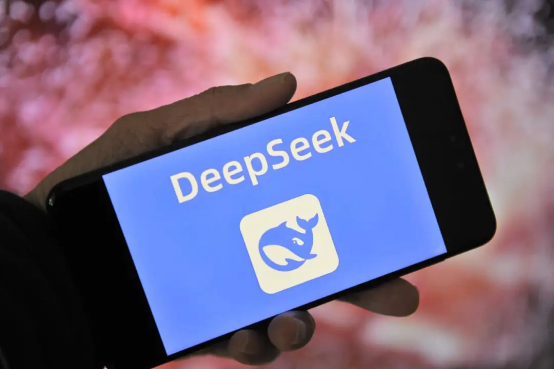
Are there still any technology giants that have not integrated DeepSeek?
Upon review, it appears none remain untouched.
From leading international corporations such as NVIDIA, Amazon, and Microsoft to domestic players like BAT, Huawei, and ByteDance, shortly after DeepSeek's rise in popularity, virtually all prominent technology giants made the concerted decision to "embrace" DeepSeek.
The media eagerly dissects the variables introduced by these giants' decisions, yet one question has been overlooked: what becomes of the large models these giants previously developed on their own?
01 Three Approaches to DeepSeek Integration
While almost all technology giants have integrated DeepSeek, there are differences in the depth of their integration. Broadly, there are three scenarios.
The first is an almost unreserved full embrace.
Tencent stands as a representative of this approach and was the first giant to respond.
In terms of products, Tencent first announced the integration of Tencent Yuanbao with the full-featured version of DeepSeek-R1, supporting both Tencent Hunyuan and DeepSeek models. Subsequently, it conducted a beta test of the AI search function within WeChat, its flagship product. Following this, Tencent Map, QQ Music, QQ Browser, Tencent Docs, and other products have successively integrated DeepSeek.
Notably, Tencent Yuanbao, the first to integrate DeepSeek, is an AI assistant developed by Tencent. Tencent positions this product as a "C-end AI assistant app based on the self-developed Hunyuan large model," akin to Baidu's Wenxin Yiyan, ByteDance's Doubao, and Alibaba's Tongyi.
Tencent Yuanbao's integration with DeepSeek was not merely cursory; it was also promoted via a nine-grid download option within WeChat, the largest traffic portal. Red dots and the word "new" provided prominent reminders, with "Full-featured DeepSeek" labeled beneath the logo. These actions amply demonstrate Tencent's resolve to embrace DeepSeek.
The second scenario is a reserved and "measured" integration.
The most illustrative example is ByteDance. According to public information, ByteDance's current consumer-facing applications that have integrated DeepSeek include Wukong Browser and Jimeng, while business-facing applications include Feishu and Volcano Engine.
ByteDance has integrated DeepSeek into a considerable number of applications, but none of them are core products. Douyin and Doubao, the two super apps on which ByteDance heavily relies in the era of AI large models, have yet to succumb to DeepSeek.
Baidu and Alibaba exhibit similar tendencies in this regard.
Although Baidu's main products, Search and Wenxin Yiyan, have integrated DeepSeek, according to Baidu's official announcement, the core function of deep search to be launched in the future will still originate from the self-developed Wenxin large model.
On Alibaba's side, Tongyi APP, the C-end flagship product of the Tongyi large model and positioned as an "all-round AI assistant," has not yet integrated DeepSeek.
It is evident that Baidu and Alibaba's self-developed large model products maintain a certain distance from DeepSeek, preserving some independent space for the development of their own products.
The final scenario is integration through cloud platforms, serving dual purposes: one is to utilize DeepSeek as a credential, given its "free and open-source" nature; the other is to leverage DeepSeek to enhance their AI field competitiveness, attract more developers and enterprise customers, and expand their business scope and revenue sources by providing deployment and application services for the DeepSeek model.
02 Same Actions, Different Mindsets
The reason technology giants would lower their stance to accept DeepSeek is largely because their own models have not demonstrated an overwhelming advantage, necessitating the use of DeepSeek's capabilities to form a differentiated edge.
The self-developed large models of various technology giants are constrained by their respective training data. For instance, Baidu's Wenxin Yiyan primarily relies on internet text data; Alibaba's Tongyi Qianwen stems from multimodal data such as text, images, and audio from e-commerce businesses; Tencent's Hunyuan utilizes social network and user behavior data; ByteDance's Doubao derives a vast amount of data from its own businesses like Douyin and ByteDance; Huawei's Pangu large model employs various types of data, including industry, meteorology, text, and images.
This results in each large model possessing distinct strengths. For example, Wenxin Yiyan excels in long text processing and multilingual dialogue; Hunyuan is superior in social scenarios; Doubao leads in content generation and precise recommendations; Tongyi Qianwen responds faster in e-commerce recommendation scenarios; Pangu excels in execution speed and generalization ability. This signifies that, to date, no single model has been able to outperform others across all dimensions.
Frost & Sullivan's report, "China's Large Model Capability Evaluation 2024," also highlights that large models from technology giants such as Baidu's Wenxin Yiyan, Tencent's Hunyuan, and Alibaba's Tongyi Qianwen are all in the first tier, considered relatively comprehensive in technical capabilities with sizable user bases. However, it does not provide a clear verdict on which one possesses the overall superior ability.
Specifically, the depth of integration with DeepSeek among these giants mirrors their different mindsets. In summary, Tencent is the most "opportunistic," ByteDance is the most "reserved," while Baidu and Alibaba are more "pragmatic."
When Tencent launched Yuanbao last May, it publicly announced that it was not yet prepared to invest in promotions or compete with similar products to increase its overall scale. Its presence has not been strong for a long time. However, Tang Daosheng, CEO of Tencent Cloud and Smart Industries Group (CSIG), once responded in an interview: "When we see clear opportunities, we will not hesitate to increase investment, and collaborative operations can be very agile."
Therefore, when DeepSeek emerged, Tencent integrated it with an almost all-in attitude. It is evident that in terms of AI business, Tencent still adheres to its consistent investment logic, which is to establish a position with self-developed products before determining the exact direction and then adjust the scale of resource investment based on environmental changes.
In contrast, ByteDance is not "convinced" by DeepSeek's sudden emergence. Media reports claim that internally, ByteDance believes short-term fluctuations do not represent the true user experience of a product.
CEO Liang Rubo also stated at a company-wide meeting that after OpenAI released the long-chain thinking model in September last year, becoming an industry hotspot, ByteDance recognized significant technological changes but "did not feel the need to replicate it immediately... Looking back now, if we had rushed to address major issues from the start, we might have achieved it earlier."
In terms of business, ByteDance launched the Doubao large model inference mode at the beginning of March, covering question answering, search, writing, and reading scenarios. Users can directly experience it by enabling the "Deep Thinking" switch in the input box.
This year, Liang Rubo set the primary goal for ByteDance's AI team to "pursue the 'intelligence' limit." From the initial reluctance to embrace DeepSeek, it is evident that ByteDance still holds high expectations for its own products while maintaining confidence.
Baidu and Alibaba are under pragmatic pressure, hoping to provide users with a superior experience on the product side as soon as possible, thereby gaining more room for their self-developed large models.
03 DeepSeek is Not the Only Answer
For technology giants, integrating DeepSeek can stabilize their current businesses in the short term and prevent them from lagging behind competitors. However, in the long run, there are still numerous uncertainties. DeepSeek currently harbors many flaws, such as insufficient general capabilities, language confusion, sensitive prompts, and inadequate software engineering capabilities. It remains uncertain whether it can solve all technical issues related to AGI on its own in the future.
If large models are viewed as a marathon, DeepSeek is undoubtedly in the front pack. However, a temporary lead does not guarantee a permanent one, and no one can ascertain that DeepSeek will maintain its leading position throughout the race.
Liu Kai, a partner at RollingAI, stated in a media interview that although DeepSeek is currently very popular, it is not applicable to all industries. Industries with high mental labor density, such as healthcare, finance, and education, are suitable for integrating DeepSeek. However, for scenarios requiring high interaction and immediate feedback, such as e-commerce customer service, game chat companions, and short video marketing, DeepSeek's capabilities are not prominent.
Besides technical compatibility, Liu Kai believes that the technical threshold for enterprises to integrate AI is relatively low. The real challenge lies in business barriers, including how to make AI comprehend internal corporate knowledge, how to integrate business processes with AI, and how to address data security and industry regulation issues.
The industry generally believes that under the trend of open source, innovations in algorithms and underlying technologies cannot construct competitive barriers. However, algorithms and innovations can procure a time lag for oneself. With a time lag comes an ecological lead, making it easier to enhance model effectiveness. Ultimately, all players will tend to the same level, but the ecosystem is difficult to abandon.
DeepSeek's current acceptance by the industry and integration by technology giants mark only the beginning of AI enterprise applications. However, the exploration of large models is far from over. Just like in a marathon, when the gun goes off, someone may run faster in the first kilometer, but the road ahead remains long.
What we can be certain of is that DeepSeek will not be the sole player on this path. It is plausible that a previously unknown but more powerful dark horse will suddenly emerge tomorrow.

